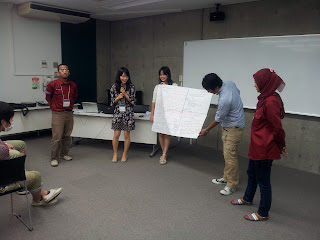Emergency Bag Campaign

Through DRR Homestay Program in Japan this Year, we were really moved by the real action taken by our host families. In each house, they have prepared emergency bags in case of disaster. Many people might have already known that emergency bag, which consists of various goods for at least 3 days, is important to be prepared. It's quite an easy thing to do, but not everyone is really doing it. In case of our host families, most of them were motivated to prepare after the 3.11 Tohoku Disaster. As for BDSG members, we are motivated after conducting DRR Homestay Program in those families. Here is our poster to invite everyone to prepare their own emergency bag.


.jpg)
.JPG)





